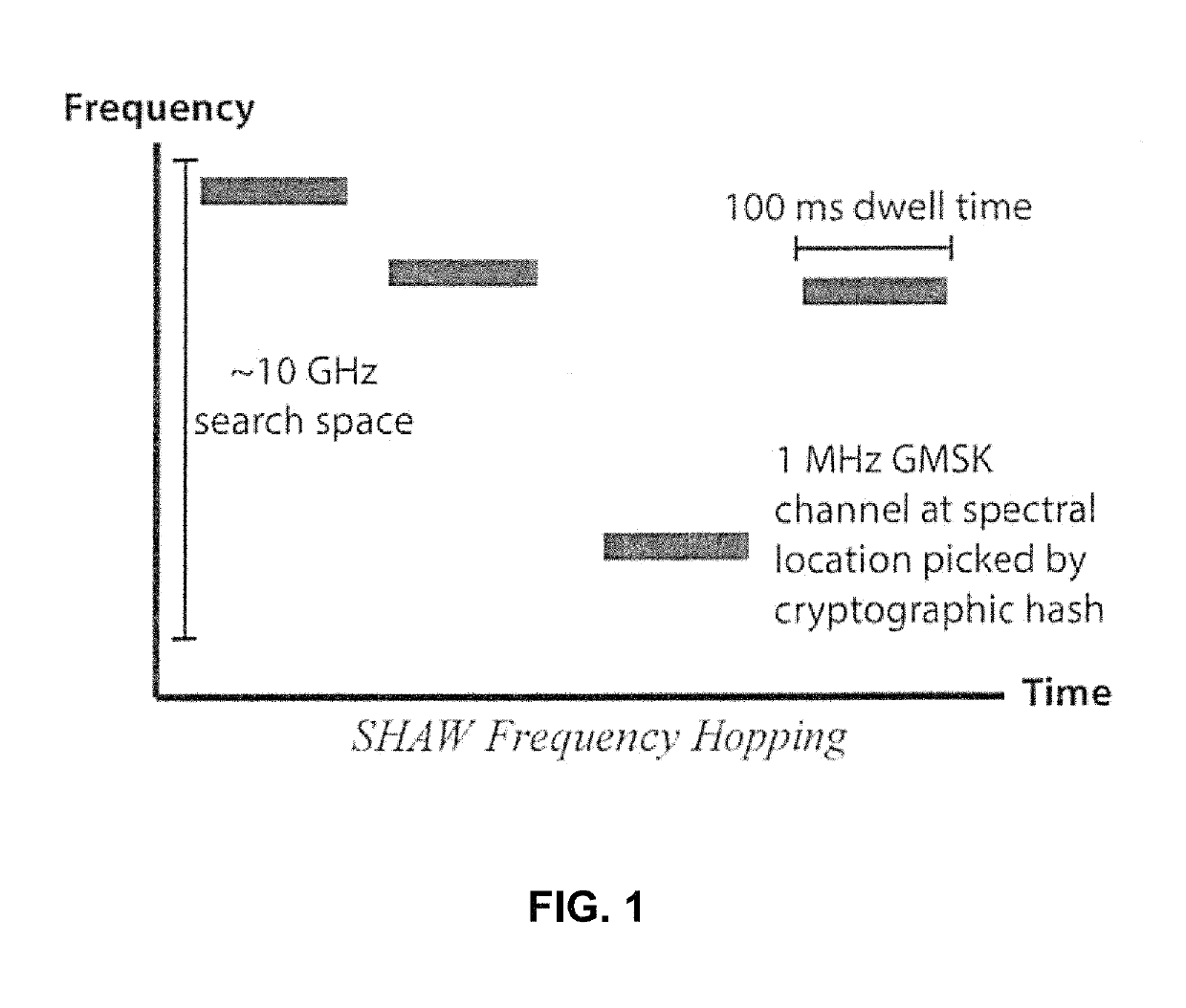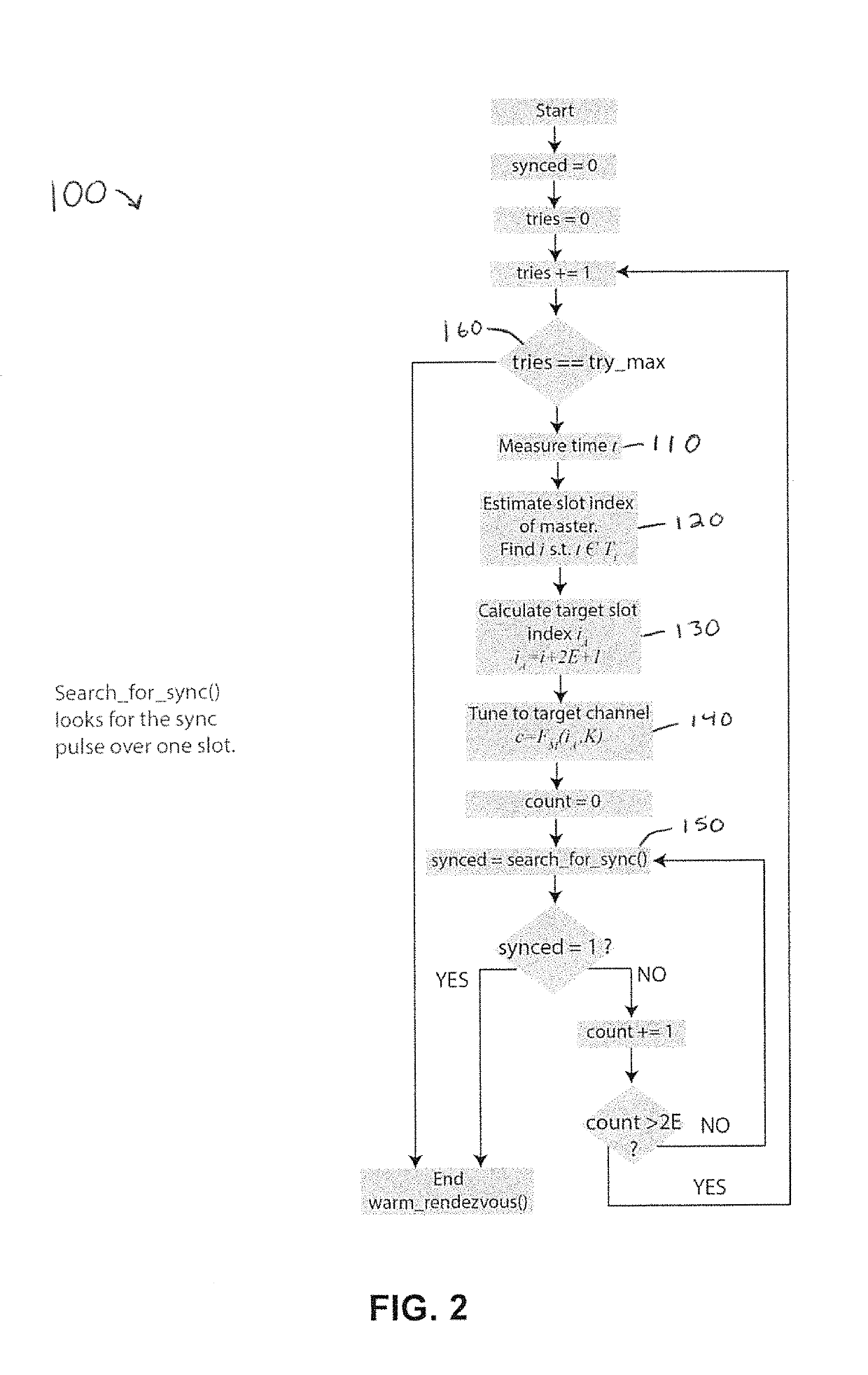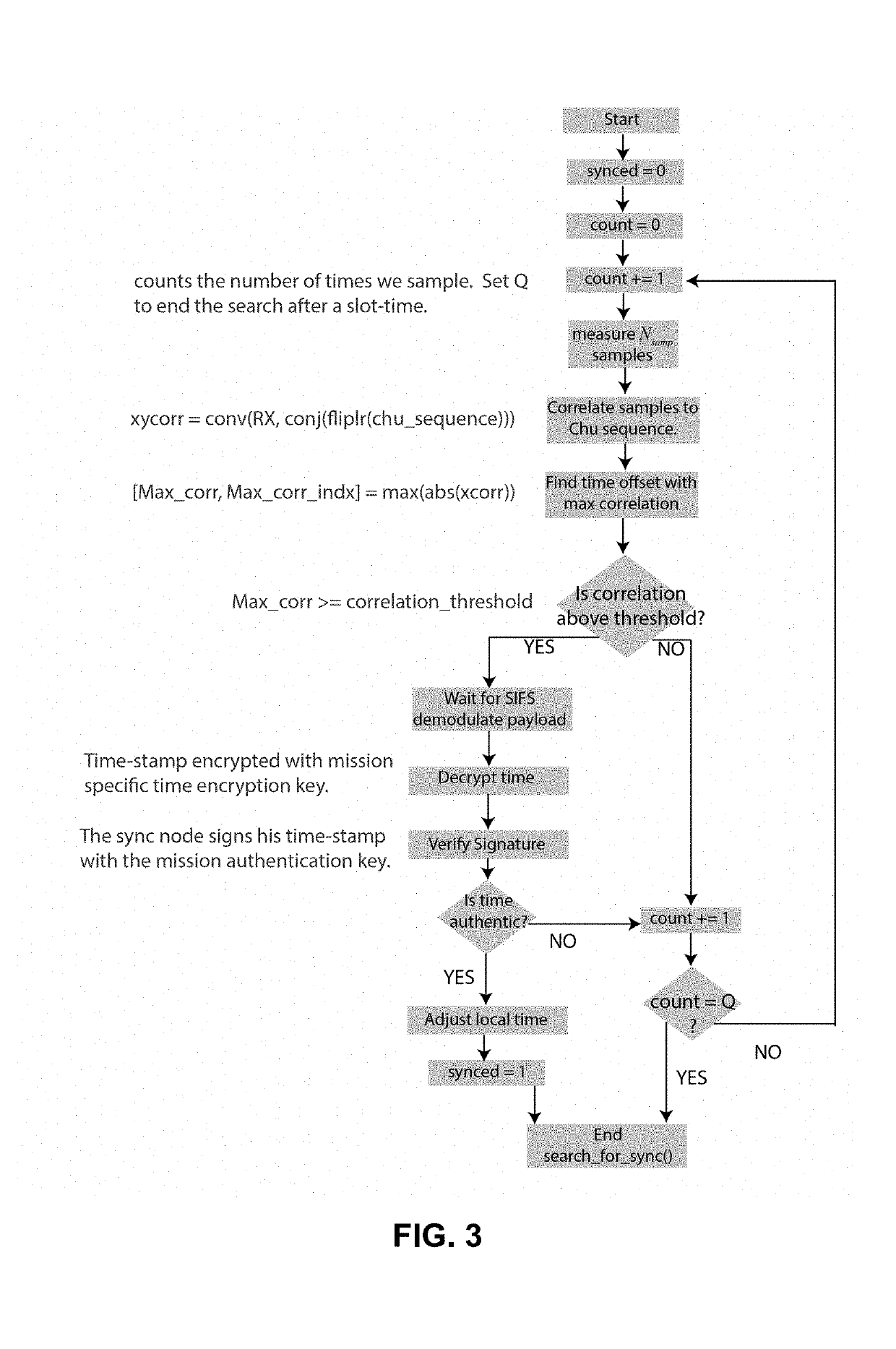Slow hopping anti-jam waveform (SHAW)
a waveform and slow-hopping technology, applied in the field of wireless tactical communications, can solve the problems of increasing the cost and complexity of the platforms that use, the error rate is not acceptable, and the bandwidth of the communications waveform cannot be simply increased, so as to achieve the effect of quick sweep and efficient attack
- Summary
- Abstract
- Description
- Claims
- Application Information
AI Technical Summary
Benefits of technology
Problems solved by technology
Method used
Image
Examples
Embodiment Construction
[0027]Referring first to FIG. 1, presented herein is a frequency hopping protocol that hops over multiple GHz while only using about 20 MHz total. It hops in an unpredictable fashion, and its instantaneous channel width is less than 5 MHz. When a node joins or is cut-off from the network, it (re)synchronizes via two mechanisms that use cryptographic authentication and encryption in order to be difficult to jam or spoof. The waveform may dwell for approximately 0.1 seconds; long enough that oscillator transients die out but too short for a jammer to search through multiple GHz of spectrum.
[0028]It is very difficult for a single jammer to sense such large bandwidths (multiple GHz) let alone to jam them. The jammer's difficulty is aggravated if the bands are full of other signals that the jammer is not supposed to attack or if DSSS is overlaid upon the slow hopping anti-jam waveform (SHAW) protocol. By dwelling longer than a conventional frequency hopper, SHAW can hop over much larger ...
PUM
 Login to View More
Login to View More Abstract
Description
Claims
Application Information
 Login to View More
Login to View More - R&D
- Intellectual Property
- Life Sciences
- Materials
- Tech Scout
- Unparalleled Data Quality
- Higher Quality Content
- 60% Fewer Hallucinations
Browse by: Latest US Patents, China's latest patents, Technical Efficacy Thesaurus, Application Domain, Technology Topic, Popular Technical Reports.
© 2025 PatSnap. All rights reserved.Legal|Privacy policy|Modern Slavery Act Transparency Statement|Sitemap|About US| Contact US: help@patsnap.com



